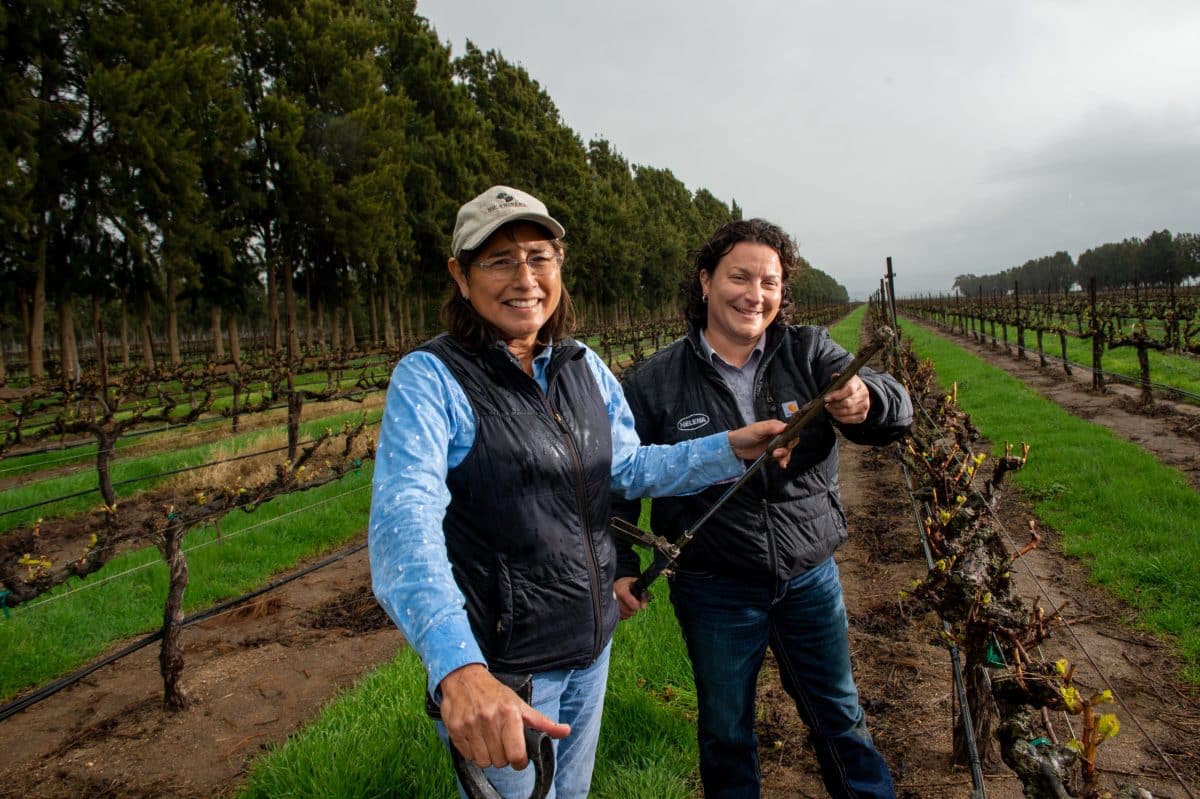If you enjoy a glass of California wine, chances are good that Brenda Wolgamott had something to do with it. She manages 3,000 acres of vineyards along the Golden State’s Central Coast for the Wine Group, the second largest wine company in the world marketing around 60 different brands.
Making great wine takes great grapes. And growing premium wine grapes takes an intense attention to the details of nutrient management, pest control and irrigation. “My approach is having balanced soil fertility,” she says. That’s where the 4R concept becomes critical.
Plant tissue and soil samples are taken at key timings to ensure that adequate nutrition is available to the crop at the right time. The tissue samples are GPS plotted to monitor the vineyard over the year. A nitrogen management program is in place to ensure the vines receive the precise amount needed for foliage growth, but not too much so the leaves overwhelm the grapes and give the red wines vegetative flavor notes.
She incorporates the use of an in-house drone and works with a Syngenta program that takes infrared pictures that show stress spots. Brenda is a Certified Crop Advisor (CCA), so she knows what to do if she spots an area that’s lagging. In addition, she works with Rebecca Kraup, also a CCA with Helena Agri, Yara International’s retailer.
Fertigation through a drip system both irrigates and fertilizes the vines, allowing precise nutrient application of the right nutrient at the right time. In addition, she uses foliar application as needed. All the information goes into Agrian, a software program that combines data from multiple sources to give Brenda the information she needs for scouting and nutrient recommendations.
Brenda’s vineyards are certified by the California Sustainability Winegrowing Program. A focus of Brenda’s sustainability efforts is carbon sequestration. Cover crops consisting largely of native grass species protect the fields and provide mulch. Prunings and clippings are also used as mulch, which promotes water conservation and reduces the carbon footprint. ‘We’re doing some trials with different cover crops and how well we can store more carbon,” she adds.
When Brenda took over the vineyards, she was dealing with older vines, some of which have compromised root systems. At the time, some blocks were producing around 3 tons per acre of grapes on a very high fertilizer budget.
In the last five years, yields have increased to 6-8 tons per acre, depending on the winemaker’s preference for grape quality, all while decreasing the amount of nutrient inputs. The fertilizer budget decreased from $324 per acre to just under $140, a savings of more than $552,000. This increase in efficiency is due to a focus on the right timing and right source of nutrients.
Best Practice Management
- Account for nutrient credits from the previous year to determine rate
- Variable rate application of nutrients; 20 percent applied post-harvest
- Split applications of nutrients
- GPS precision planting and nutrient application
